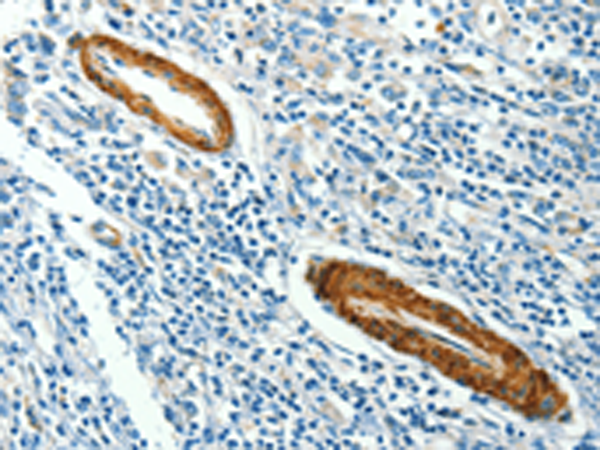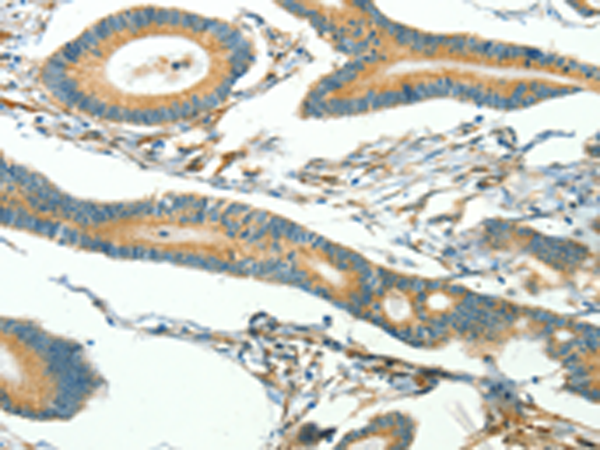


| WB | 咨询技术 | Human,Mouse,Rat |
| IF | 咨询技术 | Human,Mouse,Rat |
| IHC | 1/50-1/200 | Human,Mouse,Rat |
| ICC | 技术咨询 | Human,Mouse,Rat |
| FCM | 咨询技术 | Human,Mouse,Rat |
| Elisa | 1/1000-1/5000 | Human,Mouse,Rat |
| Aliases | LQT9; VIP21; LGMD1C; VIP-21 |
| WB Predicted band size | 17 kDa |
| Host/Isotype | Rabbit IgG |
| Antibody Type | Primary antibody |
| Storage | Store at 4°C short term. Aliquot and store at -20°C long term. Avoid freeze/thaw cycles. |
| Species Reactivity | Human |
| Immunogen | Synthetic peptide of human CAV3 |
| Formulation | Purified antibody in PBS with 0.05% sodium azide and 50% glycerol. |
+ +
以下是3篇与CAV3(Caveolin-3)抗体相关的文献摘要信息:
---
1. **文献名称**:*"Caveolin-3 T-Cell Epitopes in Limb-Girdle Muscular Dystrophy*
**作者**:Carbone I et al.
**摘要**:研究CAV3抗体在肢带型肌营养不良(LGMD)患者中的特异性,发现CAV3的自身抗体可能靶向特定T细胞表位,导致肌肉细胞膜结构异常。通过免疫印迹法验证抗体与CAV3蛋白的结合能力。
---
2. **文献名称**:*"Antibody-based detection of caveolin-3 in neuromuscular disorders*
**作者**:Woodman SE et al.
**摘要**:开发一种高特异性CAV3抗体用于诊断工具,通过免疫组化和Western blot分析肌肉活检样本,发现CAV3表达缺失与遗传性肌病相关,验证抗体在临床病理检测中的可靠性。
---
3. **文献名称**:*"Caveolin-3 deficiency causes cardiac hypertrophy and impaired membrane repair*
**作者**:Matsuda C et al.
**摘要**:利用CAV3抗体研究基因敲除小鼠模型,发现CAV3蛋白缺失导致心肌细胞膜修复功能缺陷,抗体染色显示心肌组织中CAV3分布异常与心脏肥厚表型密切相关。
---
如需更多文献或具体年份/期刊信息,可进一步补充说明。
Caveolin-3 (CAV3) is a muscle-specific isoform of the caveolin protein family, primarily expressed in skeletal, cardiac, and smooth muscle cells. It plays a critical role in forming caveolae, small invaginations of the plasma membrane involved in signal transduction, lipid homeostasis, and mechanoprotection. CAV3 interacts with various signaling molecules, including nitric oxide synthase (nNOS) and dystrophin-glycoprotein complex components, influencing muscle membrane stability and repair. Mutations in the CAV3 gene are linked to several hereditary muscle disorders, such as limb-girdle muscular dystrophy type 1C (LGMD1C), rippling muscle disease, and isolated hyperCKemia. These mutations often disrupt caveolae formation, impair membrane integrity, or perturb signaling pathways, leading to muscle weakness, myopathy, or episodic rhabdomyolysis.
CAV3 antibodies are essential tools for studying its expression, localization, and functional alterations in disease models. In diagnostics, they help detect CAV3 protein deficiencies or abnormal aggregation in muscle biopsies, aiding in the identification of caveolinopathies. Research applications include Western blotting, immunohistochemistry, and immunofluorescence to explore CAV3's role in muscular pathologies or its interplay with other cellular components. Additionally, CAV3 antibodies contribute to investigating potential therapeutic strategies, such as gene therapy or membrane-stabilizing interventions, targeting caveolin-related mechanisms. Their specificity and reliability are critical for advancing both basic research and clinical understanding of CAV3-associated diseases.
×